- Discover Winter Yew Species
- The Beauty of Winter Yew Species
- Types of Winter Yew Species
- How to Care for Winter Yew Species
- Visit Our Nursery
- Explore the Yew Plant Collections
- Varieties of Yew Plants
- Caring for Yew Plants
- Visit Our Nursery
- Find Your Perfect Winter Yew Species
- Compact Winter Yews
- Tall Winter Yews
- Variegated Winter Yews
- Low Maintenance and Disease Resistant
- Visit Our Nursery
- Experience the Beauty of Winter Yew
- Why Choose Winter Yew?
- Tips for Caring for Winter Yew
- Discover Winter Yew at Our Nursery
- Learn About Winter Yew Care
- Choosing the Right Location
- Watering
- Protecting from Winter Damage
- Pruning and Maintenance
- Visit Our Nursery for Winter Yew
- Benefits of Winter Yew
- Selection of Winter Yew Species
- Visit Our Nursery Today
- Discover the History of Winter Yew
- Origins
- Symbolism
- Medicinal Uses
- Cultural Importance
- Conservation Efforts
- Join Our Winter Yew Workshops
- What to Expect
- Workshop Schedule
- How to Register
- Grow Your Garden with Winter Yew
- Why Choose Winter Yew?
- How to Grow Winter Yew
- Winter Yew Varieties
- Questions and Answers:
- What is the Perfect Winter Yew Species?
- Can the Taxus baccata survive harsh winters?
- What are the benefits of planting the Taxus baccata in winter?
- Can I plant the Taxus baccata in containers during winter?
- How tall does the Taxus baccata grow?
- What kind of soil does the Taxus baccata prefer?
- How often should I water the Taxus baccata during winter?
- Videos: Yew Tree Varieties at Art’s Nursery
Winter is a magical time of year, and here at our nursery, we have the perfect yew species to add a touch of beauty to your winter landscape. Yews are known for their evergreen foliage and ability to thrive in colder temperatures, making them an excellent choice for winter gardens. Whether you’re looking to add a pop of color to your front yard or create a stunning backdrop for your outdoor entertaining space, our selection of winter yew species has something for every garden.
One of our favorite winter yew species is the Taxus baccata ‘Fastigiata’. The tall, slender form of this yew makes it a fantastic choice for creating privacy and adding structure to your garden. The dense foliage of this species also provides an excellent windbreak, protecting your garden from harsh winter gusts. Its deep green leaves are a beautiful contrast against the white winter landscape, creating a stunning focal point for any garden.
If you’re looking for something a bit more unique, our nursery also offers the Taxus cuspidata ‘Nana’. This dwarf yew species is perfect for smaller gardens or adding interest to flower beds. Its compact size and slow growth rate make it an excellent choice for container gardening or as a low-maintenance addition to your landscape. With its dark green foliage and rounded shape, the ‘Nana’ yew adds a touch of elegance to any winter garden.
Whether you’re a seasoned gardener or just starting out, our knowledgeable staff is here to assist you in selecting the perfect winter yew species for your garden. Visit our nursery today to explore our wide selection and discover the beauty and versatility of yews in winter.
Discover Winter Yew Species
Winter is a magical time of the year, and what better way to celebrate the season than by exploring the beauty of winter yew species? At our nursery, we have a wide variety of yew species that are perfect for adding color and life to your winter garden. Whether you’re looking for an evergreen to provide year-round interest or a deciduous yew that showcases stunning winter color, we have the perfect option for you.
The Beauty of Winter Yew Species
Winter yew species are known for their ability to thrive in colder temperatures and their resistance to harsh winter conditions. Unlike many other plants that wither and fade during the winter months, yews remain vibrant and continue to add a touch of elegance to your garden.
One of the notable features of winter yew species is their striking foliage. With vibrant shades of green that often turn deep purple or bronze in the winter, these yews create a stunning backdrop in any garden. The contrast between the evergreen yews and the white snow is truly spectacular.
Types of Winter Yew Species
There are several types of winter yew species that you can choose from, each with its own unique characteristics:
- Japanese Yew (Taxus cuspidata): This evergreen yew species has dark green needle-like foliage and can grow in a variety of soil conditions.
- Anglojap Yew (Taxus x media): A hybrid of the Japanese and English yews, this yew species is known for its dense, bushy habit and dark green foliage.
- English Yew (Taxus baccata): This classic yew species has dark green foliage and can be grown as an evergreen or a deciduous tree.
How to Care for Winter Yew Species
Winter yew species are relatively low-maintenance, but there are a few key things to keep in mind to ensure their health and vitality:
- Plant your yews in well-draining soil.
- Water your yews regularly, especially during dry winter months.
- Prune your yews in late winter or early spring to maintain their shape and promote healthy growth.
- Fertilize your yews in the spring and fall to provide them with the necessary nutrients.
- Protect your yews from harsh winter winds by providing them with a windbreak or placing them in a sheltered location.
Visit Our Nursery
If you’re ready to discover the beauty of winter yew species, we invite you to visit our nursery. Our knowledgeable staff will be happy to help you choose the perfect yew species for your garden and provide you with all the information you need to care for them during the winter months. Don’t miss out on the opportunity to transform your garden into a winter wonderland with the addition of stunning yew species!
Explore the Yew Plant Collections
At our nursery, we have a diverse collection of yew plants that are perfect for winter landscapes. These plants are not only beautiful, but also hardy and adaptable to various growing conditions. Whether you are looking for a compact yew to accent your garden or a larger variety to create a privacy hedge, we have the perfect yew for you.
Varieties of Yew Plants
We offer a wide selection of yew plants, including both traditional and unique varieties. Some of our popular yew plants include:
- English Yew (Taxus baccata): This classic yew variety is known for its dense foliage and dark green color. It is commonly used for hedging and topiary.
- Japanese Yew (Taxus cuspidata): This yew species has a more upright growth habit and is often used as a specimen plant or for creating privacy screens.
- Canadian Yew (Taxus canadensis): Native to North America, this yew plant is known for its low spreading habit and ability to tolerate a wide range of soil conditions.
- Dwarf Yew (Taxus x media ‘Sunburst’): This compact yew variety is perfect for small gardens or containers. It has golden-yellow foliage that adds a pop of color to any landscape.
Caring for Yew Plants
Yew plants are relatively low-maintenance and can thrive in a variety of growing conditions. Here are some tips to care for your yew plants:
- Planting: Choose a well-draining site with partial shade or full sun. Dig a hole twice as wide and deep as the yew’s root ball. Backfill the hole with soil and water thoroughly.
- Watering: Yew plants generally require regular watering, especially during dry periods. Water deeply but infrequently to encourage deep root growth.
- Pruning: Yew plants can be pruned to maintain their desired shape and size. Pruning is best done in late winter or early spring before new growth starts.
- Fertilizing: Yew plants benefit from an annual application of slow-release fertilizer in early spring. Follow the package instructions for proper dosage.
- Pest and Disease Control: Yew plants are relatively pest and disease-resistant. However, occasional issues can arise, such as scale insects or root rot. Regular monitoring and proper cultural practices can help prevent and manage these issues.
Visit Our Nursery
Come visit our nursery to explore our beautiful yew plant collections. Our knowledgeable staff will be happy to assist you in finding the perfect yew plants for your winter landscape needs. Don’t miss out on the opportunity to enhance your outdoor space with these stunning and versatile plants.
| Address: | 123 Main Street, Anytown, USA |
|---|---|
| Phone: | 555-123-4567 |
| Email: | info@nursery.com |
Find Your Perfect Winter Yew Species
Winter yew species are a perfect addition to any garden, adding elegance and beauty even in the coldest months. At our nursery, we offer a wide variety of winter yew species to choose from. Whether you are looking for a compact yew for a small space or a tall yew for a statement piece, we have something for everyone.
Compact Winter Yews
- Golden Globe – This small, round yew features bright yellow foliage that adds a pop of color to the winter landscape.
- Gnome – With its dense, compact form, Gnome is perfect for small gardens or as a border plant.
Tall Winter Yews
- Hick’s Yew – This tall, upright yew is known for its dark green foliage and ability to withstand harsh winter conditions.
- Density – With its columnar shape and dense foliage, Density is an excellent choice for creating privacy or adding vertical interest to your garden.
Variegated Winter Yews
- Aurea – Aurea features stunning yellow foliage with green edges, making it a standout in the winter landscape.
- Sprinter – This variegated yew has a unique foliage pattern with creamy white and green hues, adding interest and texture to your garden.
Low Maintenance and Disease Resistant
All of our winter yew species are selected for their low maintenance requirements and disease resistance. Yews are known for their durability and ability to thrive in a variety of conditions, making them a great choice for both beginner and experienced gardeners.
Visit Our Nursery
We invite you to come and visit our nursery to explore our wide selection of winter yew species. Our knowledgeable staff will be happy to assist you in finding the perfect yew for your garden. Don’t let the winter months keep you from enjoying the beauty of nature – discover the perfect winter yew species at our nursery today!
Experience the Beauty of Winter Yew
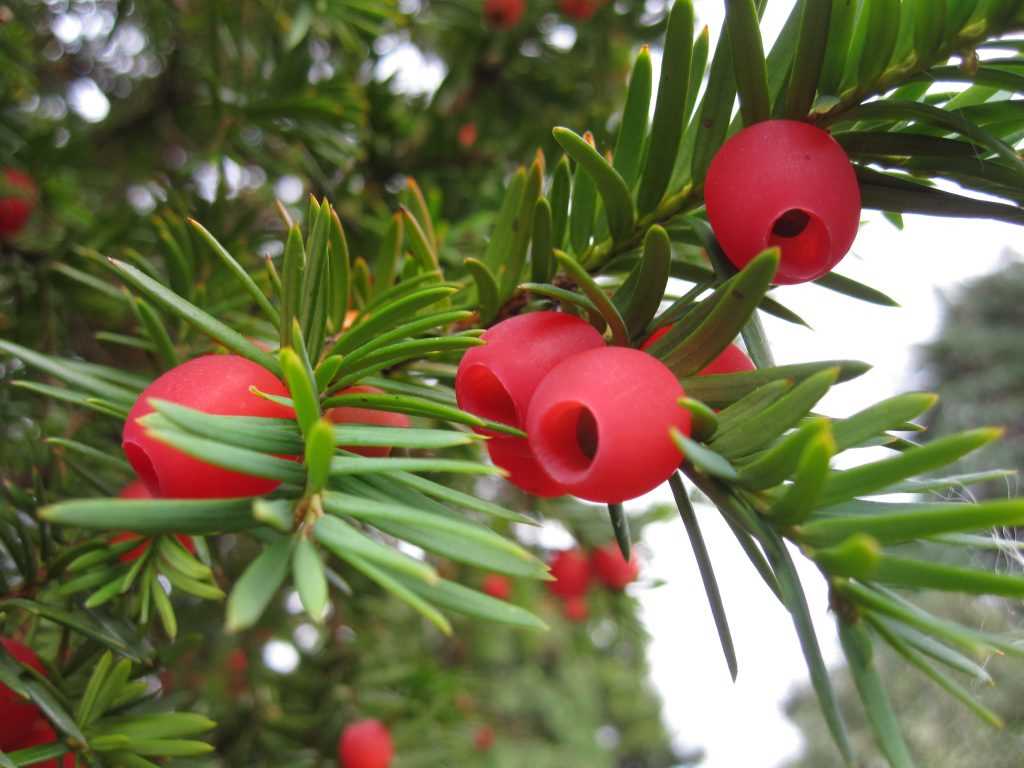
Winter Yew is a stunning evergreen species that showcases its beauty during the winter season. Its deep green foliage provides a striking contrast against the white snow, creating an enchanting scene in any garden or landscape.
Why Choose Winter Yew?
There are several reasons why Winter Yew is the perfect addition to your garden. Here are some key features that make it stand out:
- Year-round beauty: While many plants lose their leaves in winter, Winter Yew remains lush and green, ensuring your garden looks beautiful even during the coldest months.
- Cold hardiness: Winter Yew is highly tolerant of cold temperatures, making it an ideal choice for regions with harsh winter climates.
- Low maintenance: This species thrives in a variety of soil types and requires minimal care, making it perfect for busy garden enthusiasts.
Tips for Caring for Winter Yew
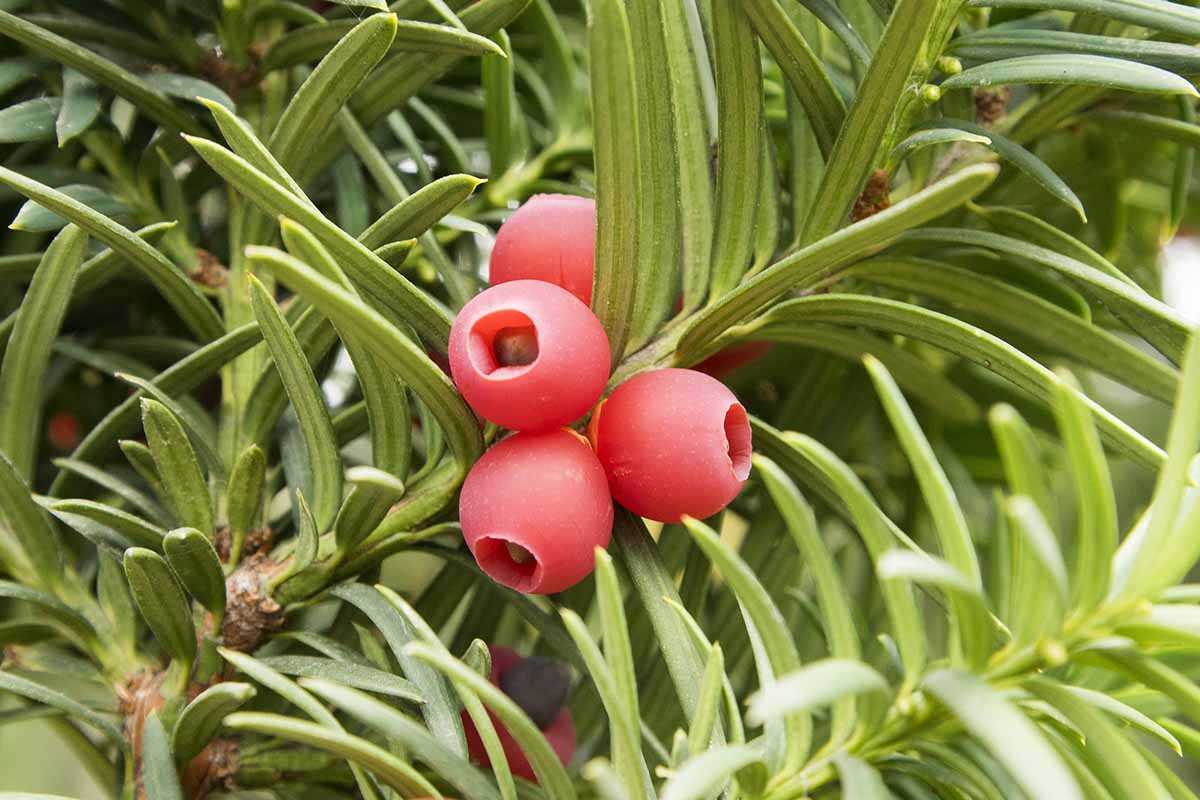
To ensure your Winter Yew thrives and maintains its beauty, consider the following care tips:
- Planting: Choose a well-draining location with partial shade for best results. Avoid areas with excessive water or full sun exposure.
- Watering: While Winter Yew is tolerant of drought conditions, it’s essential to water newly planted specimens regularly until they establish a healthy root system.
- Pruning: Minimal pruning is needed for Winter Yew. Only remove dead or damaged branches to maintain its shape and health.
- Fertilizing: Apply a balanced slow-release fertilizer in early spring to promote healthy growth and vibrant foliage.
Discover Winter Yew at Our Nursery
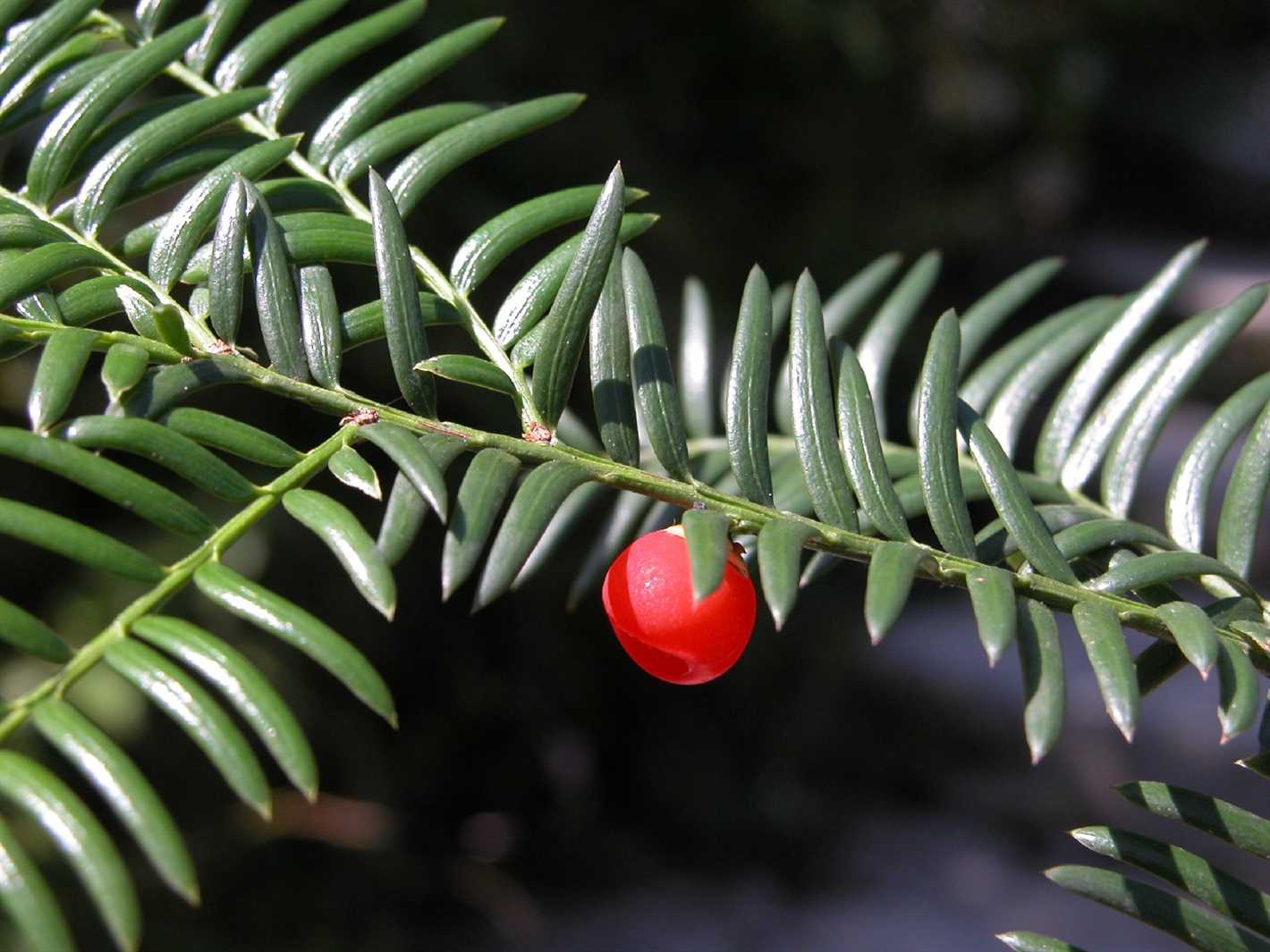
If you’re looking to add the beauty of Winter Yew to your garden, visit our nursery. We offer a wide selection of Winter Yew specimens, each carefully grown and nurtured by our experienced horticulturists. Our knowledgeable staff will assist you in selecting the perfect Winter Yew for your landscape needs.
| Contact Information | Opening Hours |
|---|---|
| Phone: 123-456-7890 | Monday-Friday: 9am-5pm |
| Email: info@nursery.com | Saturday: 10am-4pm |
| Sunday: Closed |
Learn About Winter Yew Care
Winter yews are a popular choice for adding visual interest and greenery to a winter landscape. These evergreen shrubs are known for their dark green foliage and ability to withstand cold temperatures. Proper care during winter months can help ensure that your yews stay healthy and vibrant.
Choosing the Right Location
- Winter yews thrive in partial to full shade, although they can tolerate some sunlight.
- Ensure that the soil is well-drained to prevent waterlogging, which can lead to root rot.
- Plant the yews in an area protected from strong winds, as cold winds can damage the foliage.
Watering
Proper watering is crucial for the health of your winter yews. Follow these tips to ensure your yews receive the right amount of hydration:
- Water yews deeply and infrequently during winter months. Aim to water the soil around the shrub, rather than the foliage.
- Monitor the moisture level of the soil regularly. If the soil feels dry to the touch, water the yew. If it feels moist, wait before watering again.
- Avoid overwatering, as this can lead to root rot. Allow the top layer of soil to dry out between waterings.
Protecting from Winter Damage
Winter yews are generally hardy, but some extra care can help prevent winter damage:
- Apply a layer of mulch around the base of the yew to help insulate the roots and retain moisture.
- Wrap the yew in burlap or a similar material to protect it from harsh winds or heavy snowfall. Remove the wrapping in early spring.
- Avoid using salt or de-icing chemicals near the yew, as they can damage the foliage.
Pruning and Maintenance
Regular pruning and maintenance can help keep your winter yews healthy and well-shaped:
- Prune in late winter or early spring to remove any dead, damaged, or overgrown branches.
- Use clean, sharp pruning shears to make clean cuts and avoid tearing the foliage.
- Trim the yew to maintain its desired shape and size. Avoid pruning more than one-third of the plant’s total height in a single year.
By following these winter yew care tips, you can ensure that your yews stay beautiful and thrive throughout the winter season.
Visit Our Nursery for Winter Yew
Discover the beauty of winter yew at our nursery. We have a wide variety of winter yew species that are perfect for adding a touch of elegance to your garden during the cold months. Whether you are a seasoned gardener or just getting started, our knowledgeable staff is here to help you choose the perfect winter yew for your landscape.
Benefits of Winter Yew
- Evergreen foliage adds color and vibrancy to your garden even in the winter
- Dense, compact growth habit allows winter yew to serve as an effective privacy screen
- Tolerant of shade and full sun, making it a versatile plant for any garden
- Drought tolerant once established, requiring minimal watering
- Low maintenance plant that is easy to care for
Selection of Winter Yew Species
At our nursery, we offer a wide selection of winter yew species to choose from. Whether you are looking for a tall and narrow variety to create a natural hedge or a compact variety for borders and containers, we have the perfect winter yew for your needs. Some of our popular winter yew species include:
- Japanese Yew (Taxus cuspidata): This species of winter yew is known for its dense, upright growth habit and dark green foliage.
- English Yew (Taxus baccata): With its dense, columnar shape, the English yew is an excellent choice for adding structure to your garden.
- Canadian Yew (Taxus canadensis): This low-growing winter yew species is perfect for groundcovers or planting in rock gardens.
Visit Our Nursery Today
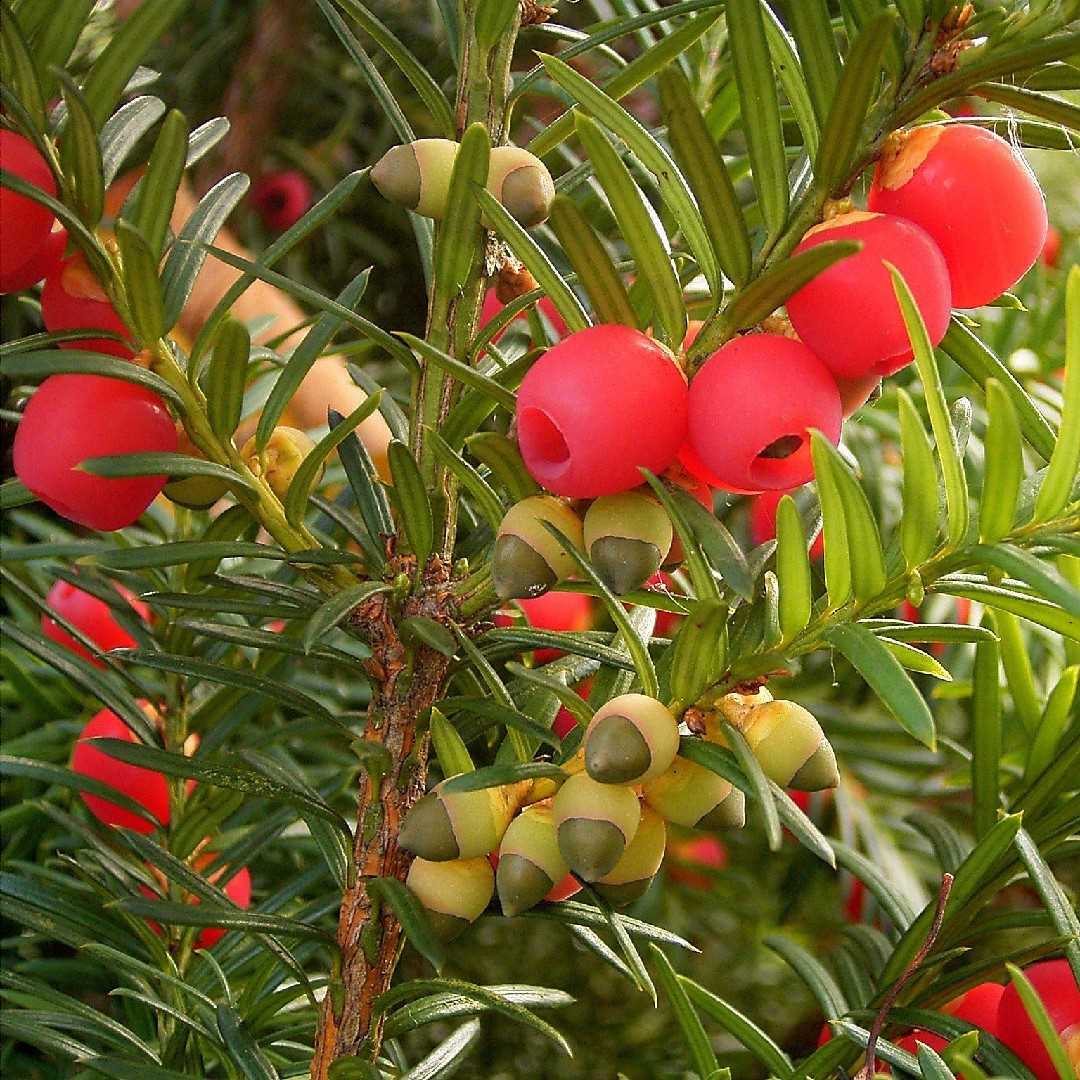
Come visit our nursery today and explore our vast selection of winter yew species. Our friendly and knowledgeable staff will guide you through the process of choosing the perfect winter yew for your garden. Don’t miss out on the opportunity to enhance your garden with the beauty of winter yew.
Discover the History of Winter Yew
The Winter Yew is a species of evergreen shrub that has a rich and fascinating history. Native to Europe and parts of Asia, it has been cultivated for centuries for its beautiful appearance and unique properties.
Origins
The Winter Yew, or Taxus baccata, is believed to have originated in the region that is now known as Turkey. It is thought to have been introduced to Europe by the ancient Greeks, who valued its wood for its durability and worked it into various structures and artifacts.
Symbolism
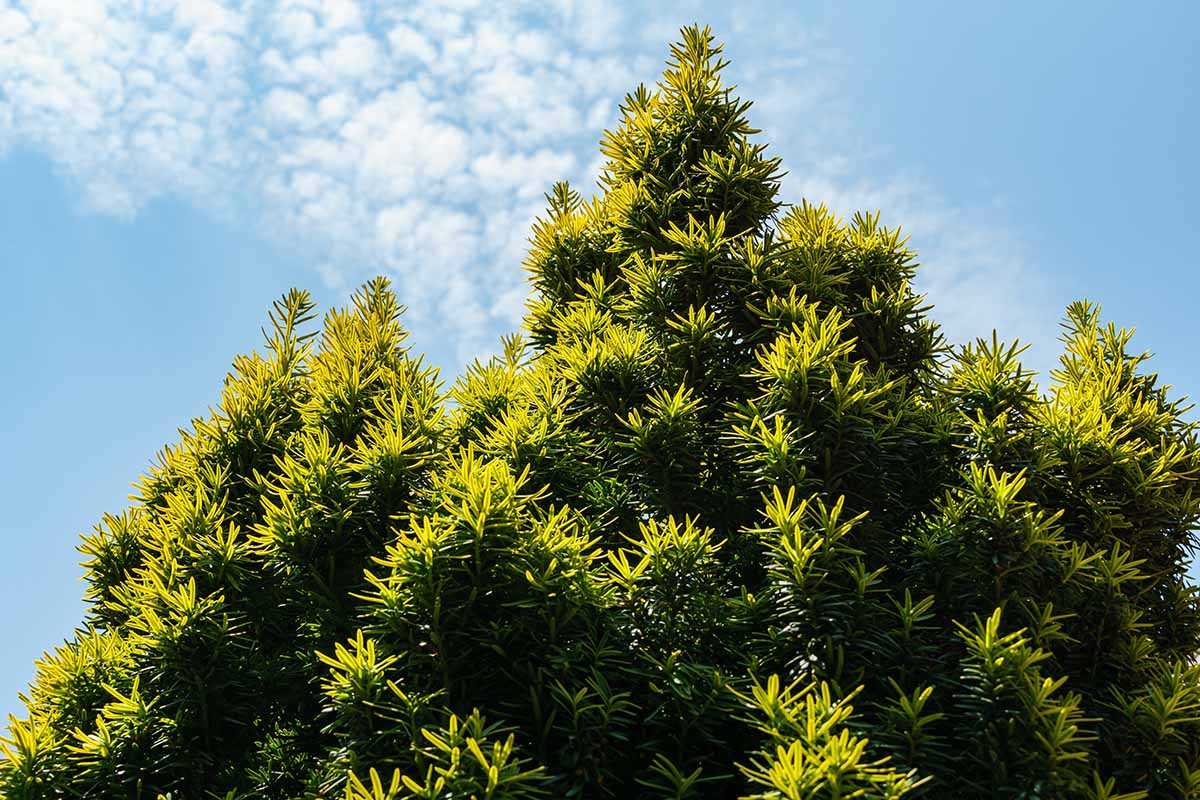
Throughout history, the Winter Yew has been associated with various symbolisms and cultural beliefs. In ancient Roman times, it was considered a symbol of immortality and was often planted in cemeteries. The Druids, an ancient Celtic religious order, also held the Winter Yew in high regard and believed that it possessed mystical properties.
Medicinal Uses
The Winter Yew has a long history of medicinal use. The bark and needles of the shrub were used by ancient civilizations as a treatment for ailments such as fever, arthritis, and pain. However, it is important to note that the Winter Yew contains poisonous compounds and should not be consumed without proper preparation and medical supervision.
Cultural Importance
In addition to its symbolic and medicinal significance, the Winter Yew has played an important role in various cultural traditions. It has been used to make musical instruments, such as harps and lutes, due to the resonance of its wood. The shrub has also been used in traditional Christmas celebrations, where its dark green foliage symbolizes eternal life.
Conservation Efforts
Despite its long history and cultural importance, the Winter Yew is currently facing conservation challenges. The species is slow-growing and vulnerable to overharvesting, making it essential to protect the existing populations and promote sustainable cultivation practices.
Join Our Winter Yew Workshops
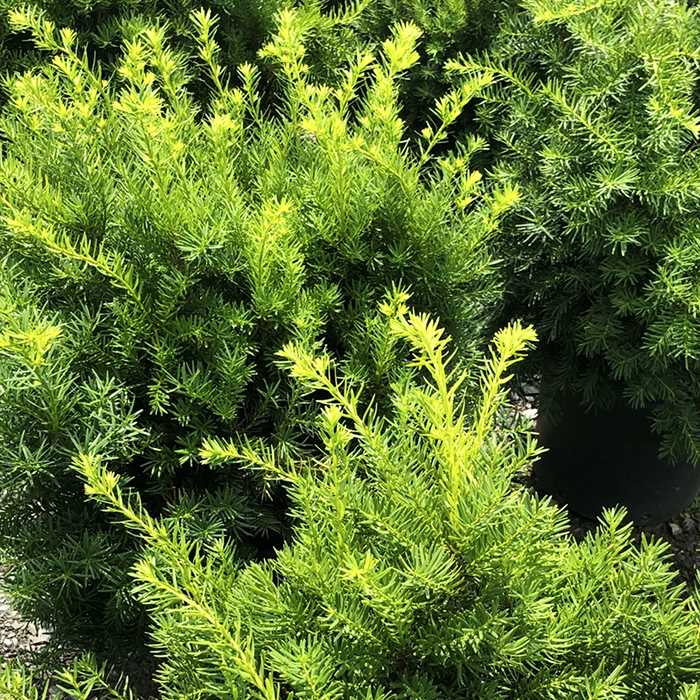
At our nursery, we are dedicated to helping you learn more about winter yew species and how to care for them. That’s why we are excited to invite you to join our winter yew workshops!
Our workshops are designed for both beginners and experienced gardeners who are interested in learning more about winter yews. Whether you’re looking to add a touch of evergreen beauty to your winter garden or want to expand your knowledge of different yew varieties, our workshops are the perfect opportunity.
What to Expect
During our winter yew workshops, you will have the opportunity to:
- Learn about different winter yew species, including their characteristics and growth habits
- Discover tips and techniques for planting and caring for winter yews
- Explore creative ways to incorporate winter yews into your garden design
- Ask questions and get personalized advice from our knowledgeable staff
Workshop Schedule
We offer workshops throughout the winter season, so you can choose a date that works best for you. Each workshop lasts approximately two hours and includes both informative presentations and hands-on activities. The schedule for our upcoming workshops is as follows:
| Date | Time | Topic |
|---|---|---|
| January 15th, 2022 | 10:00 AM – 12:00 PM | Introduction to Winter Yew Species |
| February 5th, 2022 | 1:00 PM – 3:00 PM | Different Yew Varieties for Winter Interest |
| February 19th, 2022 | 10:00 AM – 12:00 PM | Caring for Winter Yews: Pruning and Maintenance |
How to Register
Participation in our winter yew workshops is free, but space is limited, so advance registration is required. To register for a workshop, please call our nursery at 123-456-7890 or visit our website and fill out the registration form. We recommend registering early to secure your spot!
Join us for our winter yew workshops and discover the beauty and versatility of these amazing evergreen plants. We look forward to seeing you there!
Grow Your Garden with Winter Yew
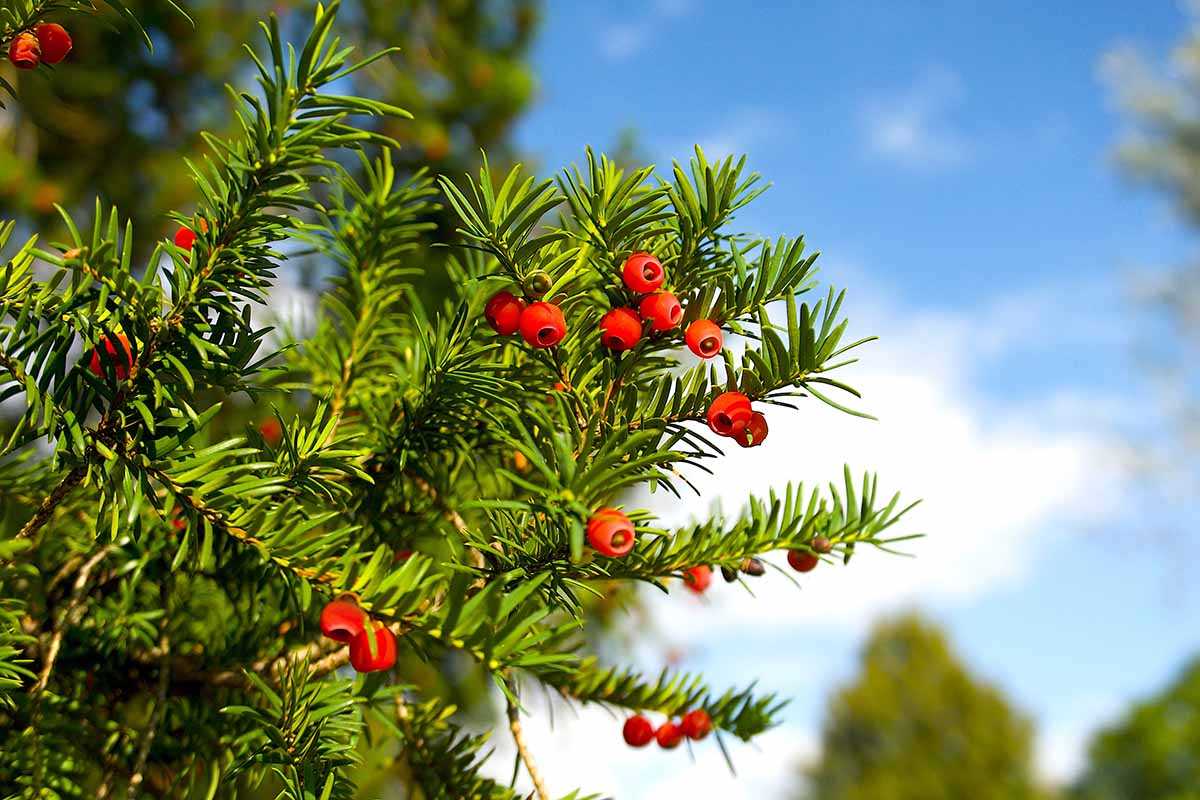
Add a touch of elegance and beauty to your winter garden with the majestic winter yew. Known for its evergreen foliage and stunning red berries, the winter yew is a must-have addition to any garden.
Why Choose Winter Yew?
Winter yew is the perfect choice for gardeners looking to add structure and color to their winter landscapes. Here are a few reasons why you should consider growing winter yew in your garden:
- Evergreen Foliage: The winter yew retains its beautiful green foliage throughout the year, providing a splash of color in an otherwise barren winter garden.
- Red Berries: The vibrant red berries of the winter yew add a pop of color to the winter landscape, attracting birds and other wildlife.
- Cold Hardy: Winter yew is highly adaptable and can withstand freezing temperatures, making it an excellent choice for cold climates.
- Drought Tolerant: Once established, winter yew is drought tolerant and requires minimal watering, making it a low-maintenance addition to your garden.
How to Grow Winter Yew
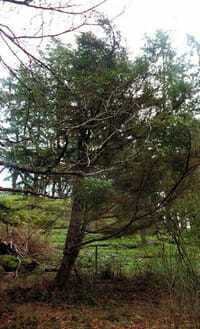
Follow these simple steps to grow winter yew in your garden:
- Choose the Right Location: Winter yews prefer partial shade, so select a spot in your garden that receives a few hours of sunlight each day.
- Prepare the Soil: Winter yews thrive in well-draining soil. Prepare the planting area by loosening the soil and adding organic matter, such as compost, to improve drainage.
- Planting: Dig a hole that is slightly larger than the root ball of the winter yew. Place the plant in the hole and backfill with soil, making sure the top of the root ball is level with the soil surface.
- Watering: Water the winter yew thoroughly after planting to help it establish roots. Afterward, water deeply but infrequently to encourage deep root growth.
- Maintenance: Winter yews require minimal maintenance. Prune them during the dormant season to maintain their shape and remove any dead or diseased branches.
Winter Yew Varieties
Here are a few popular varieties of winter yew that you can consider for your garden:
| Variety | Description |
|---|---|
| English Yew (Taxus baccata) | Classic variety with dark green foliage and red berries. |
| Japanese Yew (Taxus cuspidata) | Compact variety with spreading branches and dense foliage. |
| Chinese Yew (Taxus chinensis) | Fast-growing variety with bright green foliage. |
With its beauty and resilience, the winter yew is the perfect addition to any winter garden. Visit our nursery today and discover the perfect winter yew species to enhance your garden.
Questions and Answers:
What is the Perfect Winter Yew Species?
The perfect winter yew species at our nursery is the Taxus baccata. It is known for its stunning winter foliage and ability to withstand cold temperatures.
Can the Taxus baccata survive harsh winters?
Yes, the Taxus baccata is hardy and can survive harsh winters. It thrives in cold climates and is an excellent choice for winter gardens.
What are the benefits of planting the Taxus baccata in winter?
Planting the Taxus baccata in winter has several benefits. It allows the roots to establish themselves before spring, and the cold temperatures help stimulate growth in the spring. Additionally, the winter foliage provides beautiful greenery during the colder months.
Can I plant the Taxus baccata in containers during winter?
Yes, you can plant the Taxus baccata in containers during winter. It is important to choose the right size container and use well-draining soil. The containers should also be protected from harsh winter winds.
How tall does the Taxus baccata grow?
The Taxus baccata can grow up to 20 meters tall. However, it is also a suitable choice for hedging and can be easily pruned to maintain a desired height.
What kind of soil does the Taxus baccata prefer?
The Taxus baccata prefers well-draining soil that is slightly acidic. It can tolerate a range of soil types, including clay and loam, but it is important to avoid waterlogged or extremely dry soil.
How often should I water the Taxus baccata during winter?
The Taxus baccata should be watered regularly during winter, especially if planted in containers. The soil should be moist but not waterlogged. It is important to check the soil moisture regularly and adjust watering accordingly.







